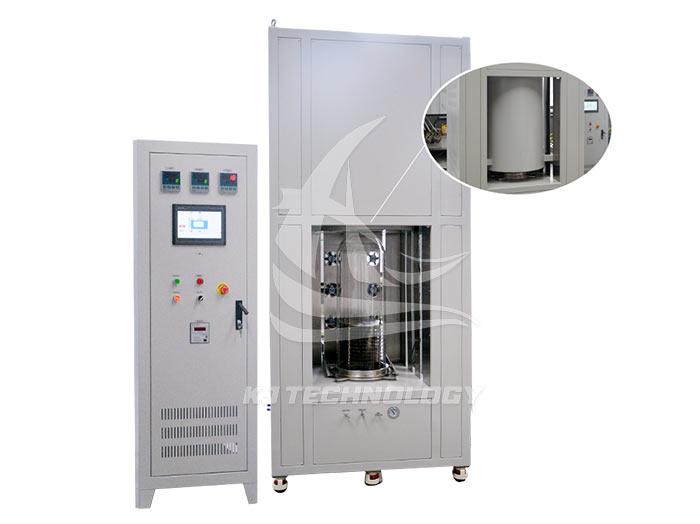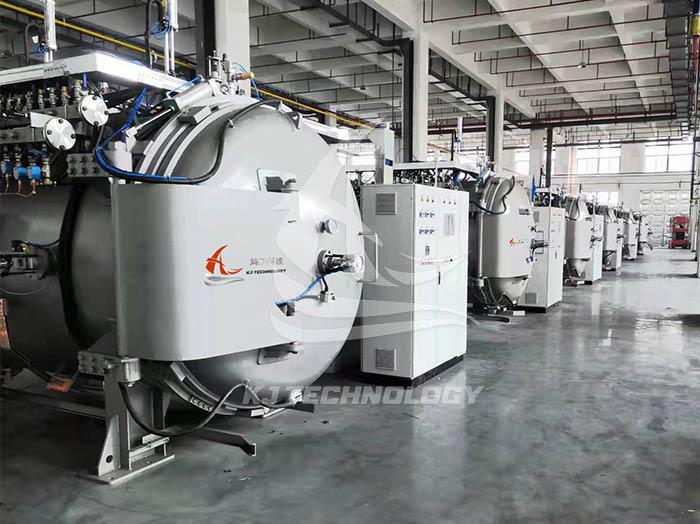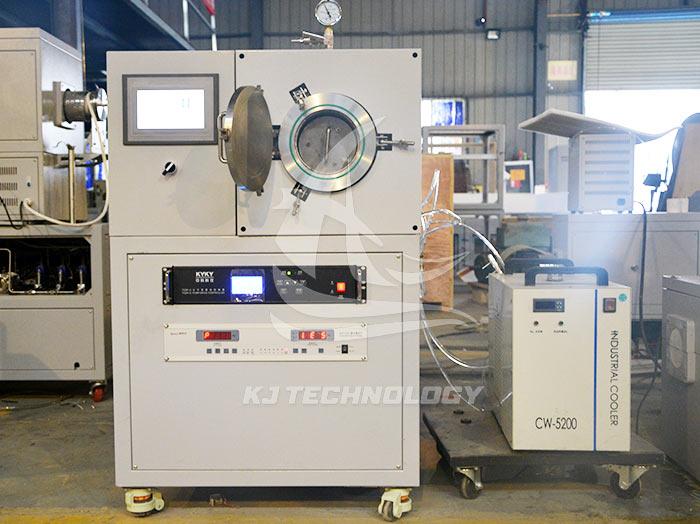Vacuum furnace annealing temperature
 10-10-2025 Author: KJ technology
10-10-2025 Author: KJ technology
The temperature range for vacuum furnace annealing is usually between 200 ℃ and 2000 ℃, depending on the material type, process requirements, and equipment design. The following is a detailed explanation:
1. Temperature range classification
Low temperature range (200 ℃ -600 ℃)
Applicable scenarios: low-temperature annealing, stress relief treatment, low-temperature quenching.
Material examples: Steel with high nitrogen content (annealing above 600 ℃ can reduce nitrogen and hydrogen content, reduce brittleness), precision workpieces (avoid carbonization or decarburization in protective atmosphere).
Advantages: Inhibit oxidation, maintain surface smoothness, omit degreasing and pickling processes.
Medium temperature range (600 ℃ -1200 ℃)
Applicable scenarios: Annealing, tempering, and solution treatment of metal materials.
Material example:
Structural steel/tool steel: eliminate work hardening and restore deformed grains.
Stainless steel/heat-resistant alloy: Avoid surface chromium depletion and maintain corrosion resistance (annealing temperature 900 ℃ -1150 ℃, vacuum degree 1.3Pa -13.3Pa).
Copper and copper alloys: Bright surfaces can be obtained by annealing under low vacuum (annealing temperature 650 ℃ -750 ℃).
Advantages: Uniform grain structure, reduced risk of hydrogen embrittlement, and improved overall material performance.
High temperature range (1200 ℃ -2000 ℃)
Applicable scenarios: high temperature annealing, high temperature solution treatment, and refractory metal treatment.
Material example:
Active metals such as titanium/molybdenum/niobium: Avoid high-temperature oxidation and maintain surface quality (annealing temperature of 810 ℃ -1450 ℃, vacuum degree of 6.7 × 10 ⁻ ³ Pa or above).
High strength steel/alloy steel: Refine grain size, improve strength and toughness (annealing temperature 850 ℃ -910 ℃).
Advantages: Thoroughly eliminate residual stress, optimize the internal structure of materials, and enhance high-temperature performance.
2. Key temperature control parameters
Temperature uniformity:
Vacuum furnaces achieve uniform temperature through radiation heating and stirring fans (well furnaces) or reasonable distribution of heating elements (horizontal furnaces).
Typical value: The temperature difference inside the furnace is ± 3 ℃ (effective heating zone), and the temperature difference can be controlled within ± 5 ℃ when processing large quantities of workpieces.
Temperature control accuracy:
Adopting PID intelligent program for temperature control, the error between thermocouple indication value and furnace temperature is ≤± 1 ℃.
Example: A certain model of vacuum annealing furnace has a temperature control accuracy of ± 1 ℃, which meets the requirements of precision part processing.
Heating and cooling rate:
Low temperature section: When starting the cold furnace, the heating rate should be slow (such as 5 ℃/min -10 ℃/min) to avoid spraying and contaminating the furnace tubes.
High temperature section: Adjust according to material characteristics, such as increasing the heating rate appropriately during annealing of titanium alloy.








